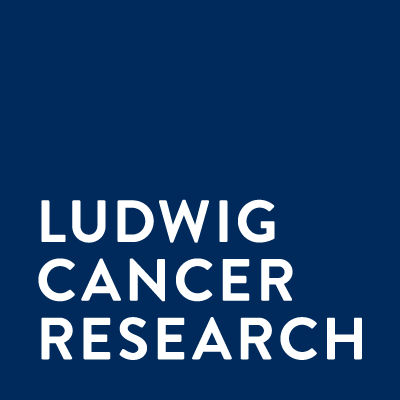Request Demo
Last update 08 May 2025
Lewis B antigen
Last update 08 May 2025
Basic Info
Synonyms- |
Introduction- |
Related
3
Drugs associated with Lewis B antigenTarget |
Mechanism Lewis B antigen inhibitors |
Active Org. |
Originator Org. |
Active Indication |
Inactive Indication- |
Drug Highest PhasePreclinical |
First Approval Ctry. / Loc.- |
First Approval Date20 Jan 1800 |
Mechanism Lewis B antigen inhibitors [+2] |
Active Org. |
Originator Org. |
Active Indication |
Inactive Indication- |
Drug Highest PhasePreclinical |
First Approval Ctry. / Loc.- |
First Approval Date20 Jan 1800 |
Target |
Mechanism Lewis B antigen inhibitors |
Active Org. |
Originator Org. |
Active Indication |
Inactive Indication- |
Drug Highest PhaseDiscovery |
First Approval Ctry. / Loc.- |
First Approval Date20 Jan 1800 |
100 Clinical Results associated with Lewis B antigen
Login to view more data
100 Translational Medicine associated with Lewis B antigen
Login to view more data
0 Patents (Medical) associated with Lewis B antigen
Login to view more data
59
Literatures (Medical) associated with Lewis B antigen01 Feb 2025·Phytomedicine
Effect of daphnetin, the coumarin derivative isolated from Daphne genus, on Helicobacter pylori adhesion to gastric epithelial cells
Article
Author: Li, Zhongdong ; Sun, Qiang ; Wang, Mengjie ; You, Xuefu ; Wang, Genzhu ; Fan, Tianyun ; Pang, Jing
01 Sep 2022·FEBS Open Bio
Lewis b antigen is a common ligand for genogroup I norovirus strains
Article
Author: Someya, Yuichi
01 Feb 2022·HelicobacterQ2 · MEDICINE
Helicobacterspecies binding to the human gastric mucosa
Q2 · MEDICINE
Article
Author: Haesebrouck, Freddy ; Matos, Rita ; Gärtner, Fátima ; Magalhães, Ana ; Amorim, Irina ; Nogueiro, Jorge ; Reis, Celso A. ; Sousa, Hugo Santos ; Carneiro, Fátima
1
News (Medical) associated with Lewis B antigen27 Mar 2025
Data highlights preclinical efficacy and safety of GNX1021, a novel glycan-targeting ADC, in gastric cancer models
NEW TAIPEI CITY, Taiwan, March 27, 2025 /PRNewswire/ -- GlycoNex, Inc. (4168, hereinafter referred to as GNX), a clinical stage biotechnology company focused on the development of glycan-directed cancer immunotherapies, today announced that preclinical data on GNX1021 will be presented on April 28 at the American Association for Cancer Research (AACR) Annual Meeting 2025 in Chicago, Illinois.
GNX1021 is an antibody-drug conjugate (ADC) targeting branched Lewis B/Y (bLeB/Y), a unique tumor-associated glycan antigen overexpressed in gastric cancer and other solid tumors. The poster will highlight in vivo efficacy and safety findings from gastric cancer models that demonstrate GNX1021's tumor control activity.
"We are very pleased that research involving GNX1021, our glycan-targeting ADC, was accepted for presentation at AACR 2025," said Dr. Mei-Chun Yang, CEO of GlycoNex. "AACR is one of the most influential oncology meetings in the world, and the opportunity to showcase the potential of GNX1021 to treat gastric cancer, an often-deadly cancer with few available therapies, highlights the importance of this program."
Presentation Details:
About GlycoNex Inc.
GlycoNex Inc. is a clinical-stage biotechnology company focused on the development of glycan-directed cancer immunotherapies that effectively inhibit tumor growth while minimizing side effects. GlycoNex possesses a robust pipeline led by GNX102, a humanized monoclonal antibody (mAb) designed to target abnormal sugar molecules in cancer cells. GNX102 has successfully completed Phase 1 clinical trials with data demonstrating excellent safety and promising efficacy. GlycoNex is also advancing a portfolio of antibody-drug conjugates (ADCs) that precisely attack cancer cells while sparing healthy tissue. GlycoNex is headquartered in New Taipei City, Taiwan. For more information, visit .
Contact
s for GlycoNex, Inc.
Investor Relations
Tiberend Strategic Advisors, Inc.
David Irish
[email protected]
Media Relations
Eric Reiss
[email protected]
SOURCE GlycoNex, Inc.
WANT YOUR COMPANY'S NEWS FEATURED ON PRNEWSWIRE.COM?
440k+
Newsrooms &
Influencers
9k+
Digital Media
Outlets
270k+
Journalists
Opted In
GET STARTED
AACRPhase 1ImmunotherapyADC
Analysis
Perform a panoramic analysis of this field.
login
or

AI Agents Built for Biopharma Breakthroughs
Accelerate discovery. Empower decisions. Transform outcomes.
Get started for free today!
Accelerate Strategic R&D decision making with Synapse, PatSnap’s AI-powered Connected Innovation Intelligence Platform Built for Life Sciences Professionals.
Start your data trial now!
Synapse data is also accessible to external entities via APIs or data packages. Empower better decisions with the latest in pharmaceutical intelligence.
Bio
Bio Sequences Search & Analysis
Sign up for free
Chemical
Chemical Structures Search & Analysis
Sign up for free


